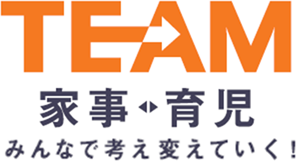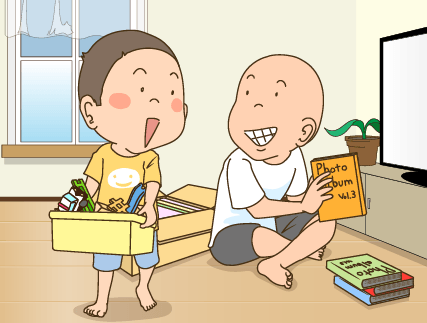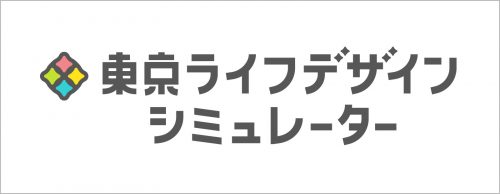Table of Contents
- Parenting Manga “Tips for Quick Tidying Up”
- Making Families Cozy! Tidying up tips for parents and children to work together
Parenting Manga “Tips for Quick Tidying Up”
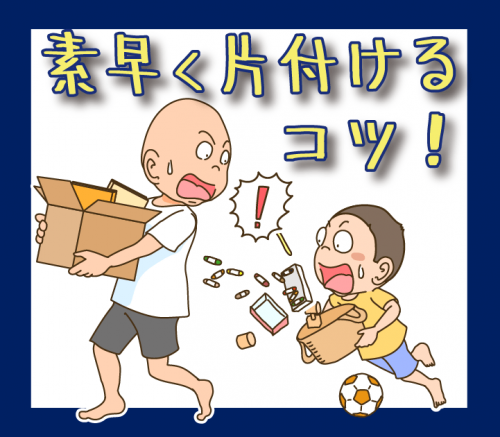
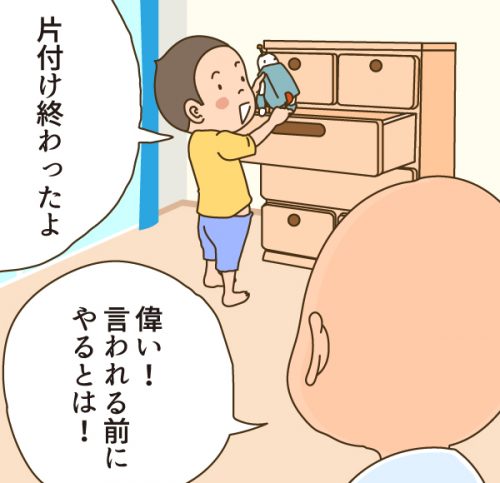
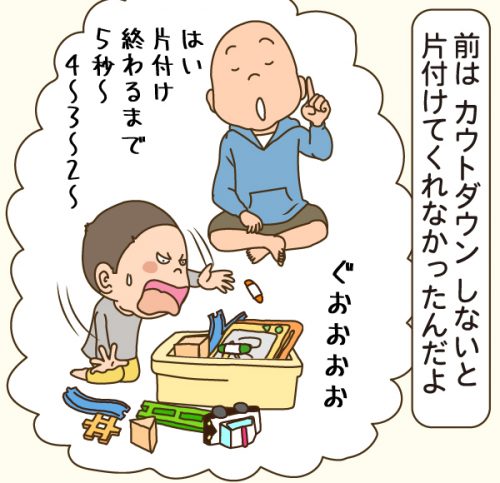
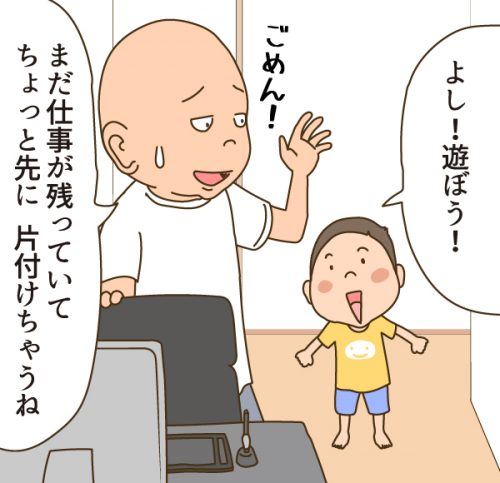
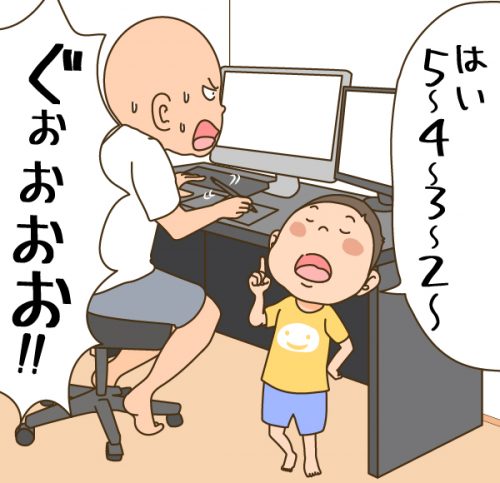

Profile
A1
After working for a design company in Tokyo, he became a freelance illustrator. He is a hard-working father who produces animation, manga, and illustrations, including winning the Yubari International Fantastic Film Festival’s International Short Film Showcase Division Excellence in Animation Award.
Making Families Cozy! Tidying up tips for parents and children to work together
Would you say your home is comfortable?
With the Corona disaster, many of you may be spending more time at home and your house may be more cluttered.
Even if you know in your head that you have to do it, it’s hard to get started on cleaning up your room.
This time,
For those moms and dads,
To spend cozy home time,
Here are some tips on how to get your family into the habit of tidying up.
Let’s talk about it as a couple and make cleaning up a system.
The problem with a room cluttered with stuff and not being put away is that it’s a problem with the system. Saori Honda, a storage and organization consultant who has published many articles in books, media, blogs, and SNS, proposes a storage method that makes tidying up easy and sustainable.
Based on his own experiences, he talked about the benefits of tidying up and how to make tidying up a system.
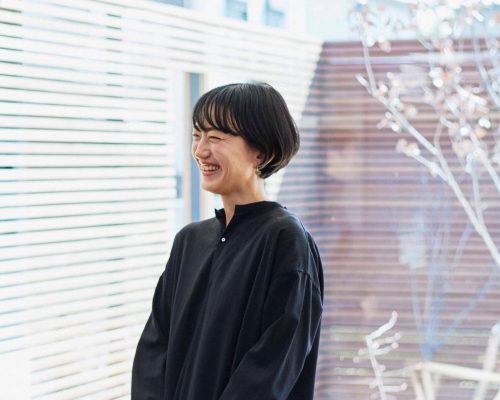
Improved marital harmony? Tidying up for mental health benefits
Do you feel discouraged every time you see cluttered clothes, toys, or tools that have been left unused?
Many people are so busy with childcare and work that they do not have time to devote to cleaning up their homes.
Although some preparation is required to create a relaxing and restful space for the family, there are so many benefits to creating a system that makes it easy to clean up and spend time in a home that is quickly put away.
The mental health of the family will be very well maintained because there will be no more irritating moods with partners who don’t remember where to put things, and no more frustration about things not being tidied up.
An environment in which both spouses are able to understand where things are, what is missing, and what is wasteful, provides an opportunity to share household chores and reduce the burden on each other.
The benefits of organizing and storing are immeasurable, such as avoiding economic loss by eliminating duplicate and wasteful purchases, and having more free time by reducing housework time.
Let’s make tidying up a habit by creating a system.
It is not a habit to say, “Okay, I’m going to clean up today! The goal is to create a storage system that keeps the space clean and tidy through daily habitual tidying.
Start with “managing things in place.
In many cases, the pattern is that only one of the couple knows where everything is, and simply sharing the management of fixed locations with the couple would reduce the burden on the partner.
To determine the location of objects, grasp the flow line for using the objects and group them.
For example, where are scissors most often used and where should they be placed along with other stationery?
How can we minimize the number of actions from using things to putting them away?
For daily-use items, it would be ideal if “take out” and “put away” could be done in a single action.
The answer varies depending on your family and the size of your house. Please find the best for everyone through discussion with your spouse.
Partners should also share any new storage furniture purchases or changes in storage methods with each other, always reporting back and providing feedback on ease of use.
It is also important to make it a habit to regularly review the need for the things you have.
If there are items that have not been used for many years, they can be decluttered and new storage space can be created.
These discussions cannot take place in a situation where only one person is doing the housework.
I hope that storage will be an opportunity for couples to share household chores and discuss them from the same perspective.
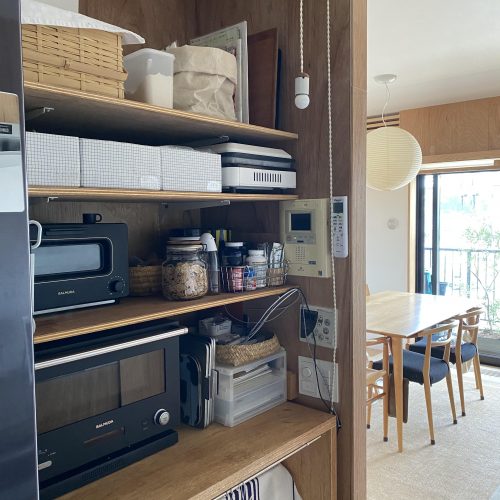
Start today, the first step in tidying up.
When you think of cleanup as the “cleanup” of the consequences of continually leaving a mess, it can be daunting to get started.
Tidying up is “preparation” for the next use of things. Preparation helps you and your family in the future.
If you try to imagine yourself and your family in the future as you work on this project, you may be able to clean it up with a positive attitude.
In addition, tidying up is essentially a simple task that can be done without using one’s head, by “putting things back in their designated storage places (for the next time they are used).
The reason why the tidying up does not continue must be the problem with where and how it is stored.
The shortcut to making tidying up a habit is to review the storage that makes you want to put things away, such as “Where should I put it so that I can put it back more easily?
Let’s clean up with kids!
Learn to see into the future with organization and storage!
The purpose of organizing and storing is to prepare for the next action.
Be aware that you are not cleaning up for the sake of cleaning up, but for the purpose of using it next.
When teaching children to clean up, I think it is good to tell them that if they clean up well, they will have no trouble the next time they play, and that children will naturally acquire the ability to look into the future through cleaning up.
Naturally, children cannot learn quickly.
My oldest child is now 5 years old and still has difficulty cleaning up spontaneously.
Still, I have the impression that they are gradually coming to understand the benefits of tidying up.
Now that he is able to clean up after himself, he is less likely to tell me when he can’t find things these days.
He seems to have gained a little self-discipline.
Also, when children are playing with their toys, create a time and timing to put the toys away and reset the play space.
We tell them that in order to play spontaneously in a limited space, they need to reserve space, and that if they take out toys incessantly, it will be difficult to play with the next toy and a hassle to clean up afterwards in our home.
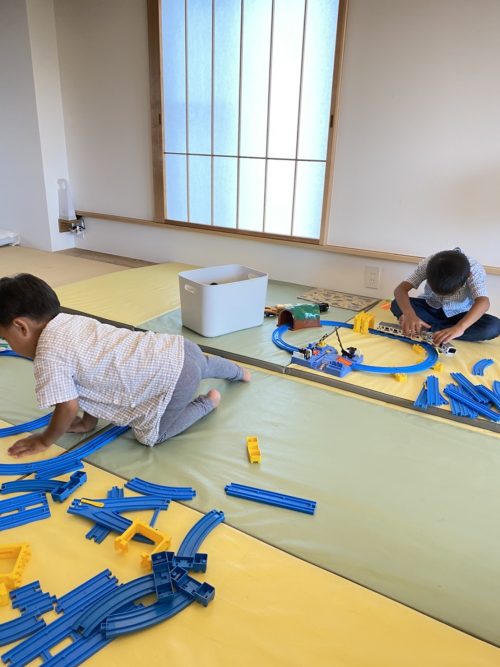
How do I get my child to keep cleaning up?
For preschoolers, it is still difficult to get them to think about where and how to put things away, so parents should discuss together with their children how to put things away successfully, and parents should prepare a storage method that is easy for their children to put away.
I have a large box with no lid so that the child can throw it in there to put it away.
We have structured the system so that there are few actions to put it away, and even children can easily put it away.
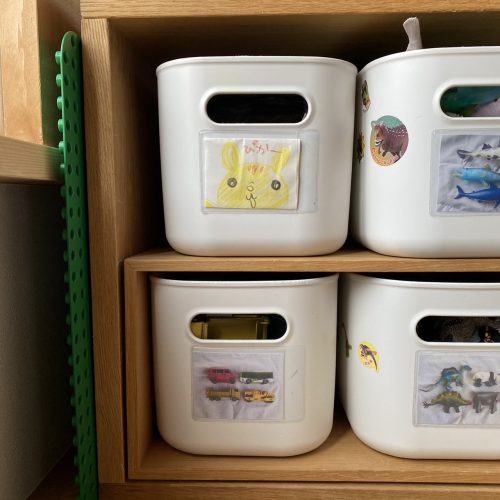
When thinking about storage, there are several options that arise from the constraints of the size and shape of the objects and the storage space.
Put them in baskets, put them on shelves, etc.
If toys are toys that you enjoy the appearance of, hanging them on the wall is also a good storage option because children will enjoy it.
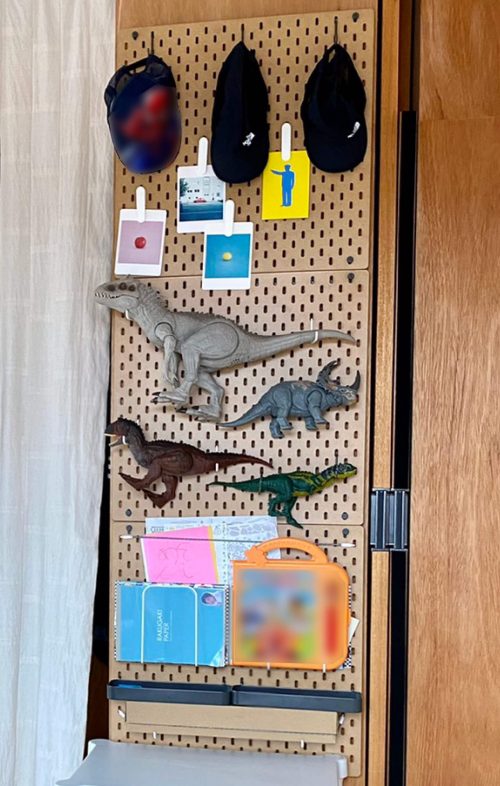
For preschoolers, it is still difficult for them to clean up spontaneously, and parents need to provide them with fun direction.
For example, it would be a good idea to have the whole family participate in the cleanup and make it a game format to see who can clean up the mess the fastest.
Make it fun for your child to clean up.

We have found that family communication is important in organizing and storing.
Why not start by sharing with your partner where you store things?
When tidying up feels like a chore, take it positively as preparation for the comfort of your future family.

